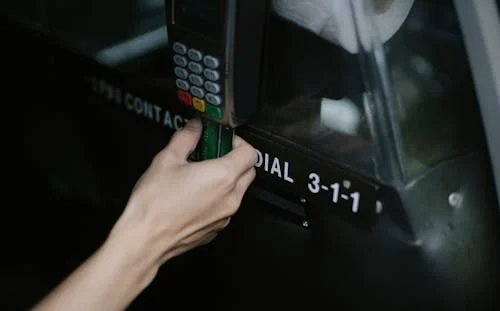In the digital age, mobile payment solutions have revolutionized the way we make transactions. Whether you’re a business owner, a financial professional, or a consumer, understanding mobile payments is essential for staying ahead in the financial landscape. This comprehensive guide will walk you through everything you need to know about mobile payment solutions, from the basics to advanced strategies for implementation and optimization.
What Are Mobile Payment Solutions?
Mobile payment solutions refer to systems or methods that enable individuals and businesses to make financial transactions using a mobile device, such as a smartphone or tablet. These solutions leverage various technologies, including Near Field Communication (NFC), QR codes, and mobile wallets, to facilitate secure and convenient payments.
Types of Mobile Payment Solutions
- Mobile Wallets: Applications like Apple Pay, Google Pay, and Samsung Pay that store credit card information and enable contactless payments.
- QR Code Payments: Systems that use QR codes to initiate transactions, commonly used in retail and e-commerce.
- Banking Apps: Mobile applications provided by banks that allow users to transfer funds, pay bills, and make purchases directly from their accounts.
- Peer-to-Peer (P2P) Payments: Platforms like Venmo and Zelle that enable individuals to send money to each other using their mobile devices.
Why Are Mobile Payment Solutions Important?
The importance of mobile payment solutions lies in their ability to enhance the efficiency, convenience, and security of financial transactions. Here are some key reasons why mobile payments are becoming increasingly popular:
- Convenience: Mobile payments eliminate the need to carry cash or physical cards, making transactions faster and more accessible.
- Security: Mobile payment solutions often incorporate advanced security features, such as tokenization and biometric authentication, to protect sensitive financial information.
- Cost-Effective: For businesses, mobile payments can reduce the costs associated with handling cash and maintaining traditional payment infrastructure.
- Global Reach: Mobile payments facilitate cross-border transactions, enabling businesses to expand their customer base globally.
How Do Mobile Payment Solutions Work?
The operation of mobile payment solutions varies depending on the type of system being used. Below is a general overview of the process:
- Setup: Users register their payment information, such as credit card details, within a mobile payment app or platform.
- Initiation: When a payment is to be made, the user initiates the transaction through the app or by presenting a QR code.
- Authentication: The transaction is authenticated using a password, PIN, or biometric verification (e.g., fingerprint or facial recognition).
- Processing: The payment is processed through secure payment gateways, ensuring that sensitive information is encrypted and protected.
- Confirmation: Once the transaction is completed, both the payer and payee receive confirmation of the payment.
Security in Mobile Payment Solutions
Security is a top priority when it comes to mobile payment solutions. Despite the convenience they offer, mobile payments must be protected against potential threats such as hacking, fraud, and data breaches. Below are some of the key security measures implemented in mobile payment systems:
- Tokenization: Instead of transmitting actual credit card numbers, mobile payment systems use tokens, which are unique identifiers that cannot be used by fraudsters even if intercepted.
- Encryption: All data transmitted during a transaction is encrypted, making it difficult for unauthorized parties to access sensitive information.
- Biometric Authentication: Many mobile payment solutions require users to authenticate transactions using biometric features, such as fingerprints or facial recognition, adding an extra layer of security.
- Two-Factor Authentication (2FA): Some systems require users to provide a second form of verification, such as a one-time password (OTP) sent via SMS or email, to complete a transaction.
Choosing the Right Mobile Payment Solution
With so many mobile payment solutions available, selecting the right one can be challenging. Below are some factors to consider when choosing a mobile payment solution:
- Compatibility: Ensure the solution is compatible with your mobile device and operating system.
- Security Features: Look for solutions that offer robust security measures, such as encryption and biometric authentication.
- Transaction Limits: Check if there are any limits on the amount you can transact using the solution.
- Fees: Be aware of any fees associated with using the solution, such as transaction fees or monthly charges.
- User Experience: Opt for a solution that offers a user-friendly interface and seamless transaction experience.
Future Trends in Mobile Payment Solutions
The mobile payment landscape is continually evolving, with new technologies and innovations emerging regularly. Here are some future trends to watch out for:
- Increased Adoption of Contactless Payments: Contactless payments are expected to become even more widespread, with more businesses and consumers embracing the convenience they offer.
- Integration of Blockchain Technology: Blockchain technology is likely to play a bigger role in mobile payments, enhancing security and transparency in transactions.
- Expansion of Digital Wallets: Digital wallets are expected to become more sophisticated, offering additional features such as loyalty programs and rewards integration.
- Growth of Cross-Border Payments: Mobile payment solutions will continue to facilitate cross-border transactions, making it easier for businesses to operate globally.
Conclusion
Mobile payment solutions are transforming the way we make financial transactions, offering unparalleled convenience, security, and efficiency. Whether you’re a consumer looking to make quick purchases or a business aiming to streamline your payment processes, mobile payments provide a versatile and scalable solution. By understanding the different types of mobile payment solutions, their benefits, and how to choose the right one for your needs, you can harness the full potential of this revolutionary technology. As the financial landscape continues to evolve, staying informed about the latest trends and advancements in mobile payments will be crucial for staying ahead in the digital age.

